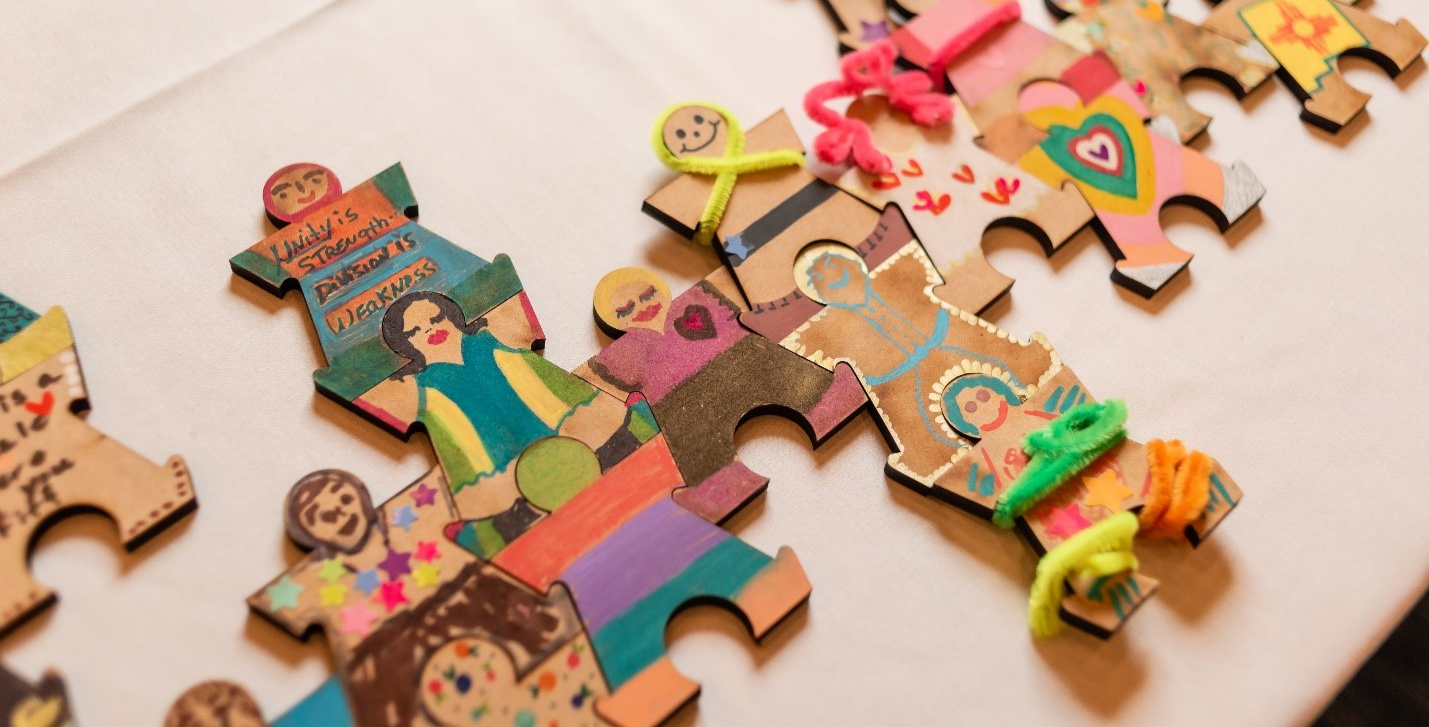
In the September 2014 issue of Engage! I profiled a new article co-authored by John Kania, Fay Hanleybrown and Jennifer Splansky Juster of FSG entitled Essential Mindset Shifts for Collective Impact, which is included in Collective Insights on Collective Impact a new resource published by the Stanford Social Innovation Review.
Writing the piece led me to reflect upon my work with Headwaters Communities in Action and what that work taught me about implementing Collective Impact. Over eight years (2005-2013) I was the lead staff person responsible for establishing and advancing the work of Headwaters Communities in Action (HCIA) – a citizen-led, multi-sector collaborative that champions community well-being projects across Dufferin County and the Town of Caledon in Ontario`s Headwaters Region. During that time a broad range of projects were initiated which resulted in important contributions to the overall well-being of the region as a whole.
What I most appreciate about the insights shared in Essential Mindset Shifts for Collective Impact is that it shines a spotlight on an important dimension of collective impact work that mirrors an anchoring theme that has been fundamental to the various projects that HCIA successfully championed: that how we work together is as important as the work that we do. Collective Impact is more than a set of three pre-conditions and five conditions. It is also an invitation to think – and work together – differently. This is why effective collective impact initiatives are “very often counter-cultural.” It is also why those championing collective impact initiatives need to be willing and able to focus beyond the work that is being done and be willing to embrace mindset shifts in how their work is accomplished.
Essential Mindset Shifts for Collective Impact identifies three mindset shifts as important to the work of collective impact:
- Who Is Involved – This mindset shift recognizes of the complex nature of Collective Impact work and that no one sector, working alone can solve it.
- How People Work Together – This mindset shift emphasizes the importance of relationship-building and trust in the work of Collective Impact; and,
- How Progress Happens - This mindset shift speaks to the fact that the nature of Collective Impact work is unpredictable and constantly changing and beyond the control of any one organization or sector.
The various projects undertaken by HCIA – which have included: enhancing our regional trails system, creating the first-ever Headwaters Community Well-Being Report, implementing a non-profit capacity-building initiative, researching rural transportation options and strengthening our regional food system – have been led by volunteer working groups of people from a variety of sectors who work together in solution-making. As the work unfolds, HCIA volunteers build relationships of trust with each other and establish new community connections. The experience with HCIA’s various projects also affirms the unpredictable nature of this work as described in “How Progress Happpens”. Initial work plans have frequently been adapted and changed in response to new information and resources or unexpected challenges.
In addition to the three mindset shifts articulated in Essential Mindset Shifts for Collective Impact, my reflection on the work of HCIA, and stories shared with me by other networks and collaboratives across North America, has led me to identify four additional mindset shifts which I believe it is good to be mindful of when describing the invitation to work differently that Collective Impact requires. These mindsets are:

MINDSET SHIFT: GOING SLOWLY TO GO FAST
There is a Kenyan proverb that says, “To go fast, go alone – to go far, go together." Our dominant culture in North America is fast-paced and action-oriented. In contrast, while Collective Impact is very much focused on results, the partners involved understand and appreciate that their work requires a multi-year commitment from organization and from funding partners. The work also initially unfolds at a slower pace, as partners’ understanding of their shared issue is deepened and challenged by their multiple perspectives. This can be extremely frustrating given our habit for action. Ironically, another dimension of the pace with which work unfolds in a Collective Impact initiative is that partners must stay focused on long-term change, while simultaneously paying attention to reaching and celebrating project milestones in order to maintain momentum and commitment to the initiative over time.
MINDSET SHIFT: CHALLENGING OUR ASSUMPTIONS: WHAT IS POSSIBLE?
When establishing a common agenda for their Collective Impact initiative, the partners involved must be willing to allow their understanding of their issue to be expanded and refined by the perspectives and experiences of other partners so that, ultimately a new more holistic and comprehensive shared understanding is created. To do this effectively, partners need to develop the ability to distinguish facts from assumptions and establish enough trust between them that our long-held beliefs about what is possible and what we believe is prohibited.

MINDSET SHIFT: BLAZING THE TRAIL AS YOU WALK IT: WORKING TOGETHER IN UNCERTAINTY
Many who champion Collective Impact initiatives come to this work with experience and skill using traditional logic models and linear strategic planning approaches. These approaches work well in situations that are predictable and can be predicted in advance from start to finish. Unfortunately complex community change efforts – which are the domain of Collective Impact – are dynamic and tend to unfold in emergent and non-linear ways. In this way the planning and implementation of Collective Impact initiatives is much more akin to a hiker blazing the trail as he walks it. The implication of this for those doing Collective Impact work is that they need to simultaneously consider what work they are doing and also how this work can best unfold within the broader community context. They must also regularly reflect on their plans and fully expect them to be adapted and changed often.
MINDSET SHIFT: RECOGNIZING & EMBRACING PARADOX
Practitioners of Collective Impact often find themselves confronted by paradoxes as they explore the complex issue they are seeking to impact. Asking question, considering multiple points of view, attending to relationships between things (and people) and embracing paradox are part of the work required to most effectively understand and navigate such situations.
The ability to work with paradox is not something that is typically required when work unfolds within the context of a single sector. So, those working with Collective Impact often find themselves having to develop greater comfort in working with ambiguity than when using other, more traditional, approaches to doing their work.
The ability to recognize paradoxes, and accept the ambiguity they illuminate, is an important skillset for those of us engaged in the work of Collective Impact. Some of the common paradoxes that are found in the work of complex community change and collective impact are described below and have also well documented in Getting to Maybe: How the World Is Changed by Frances Westley, Brenda Zimmerman and Michael Quinn Patton. These include:
- Changing Others Means Accepting Change in Oneself – Because social innovators are part “of the system” the changes they champion within the system inevitably evoke changes within the themselves as well;
- Profound Uncertainty Co-exists with Deep Understanding –The journey to implement social change often creates new levels of understanding between once disparate groups within the system and, at the same time, those engaged in this work together find it extremely difficult to predict the end result of their work from the outset.
- Working with – and Challenging – Power – Successful social change almost always require the unlocking of resources that are currently part of the status quo, while simultaneously advocating for radically new approaches
- Defining Success and Failure – The end-point of success in any social change effort is rarely “fixed” and therefore can never fully be achieved. Conversely, a “failure” can often be the source of opening a pathway that leads to a new success.
- Learning, Doing and Being “In Charge” – In the implementation of a Collective Impact effort, learning IS doing and doing IS learning. At the same time that project leaders are required to set a course and move into action, they must also surrender the idea that they fully control the outcome of the process.
- The Cassandra Paradox– This paradox reminds us that often the most obvious possibilities for change are ignored or dismissed because they are so obvious that they are often unseen.
- The Social Innovator as Leader – The attribution of individual praise or blame in the complex realm of collective impact is virtually impossible. While individual leadership plays a crucial role in advancing Collective Impact, at the same time, no one effort by any one individual can be attributed with achieving the results.
In the work championed by HCIA the notion of paradoxes and the ability to embrace the ambiguity reflected within them has been helpful in reframing community issues and challenges in ways that have successfully helped citizens to identify new opportunities for creativity and innovation.
As understanding of Collective Impact continues to be refined and deepened by practitioner insights, it is important to capture and share not only the resources and tools used to make implementation easier and more effective. Deliberate focus and attention must also capture the insights and learnings of practitioners in learning to work in new ways, together. This will enable the field pays attention to also identifying the internal capacities and mindsets that those championing Collective Impact initiatives must cultivate and demonstrate within ourselves and each other.





